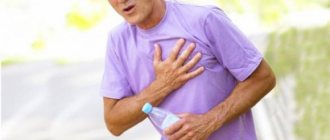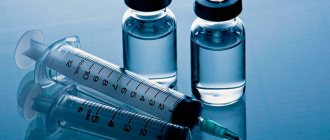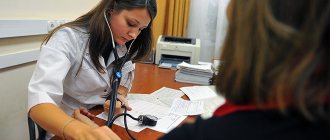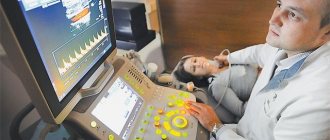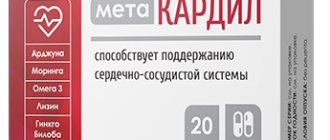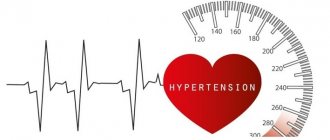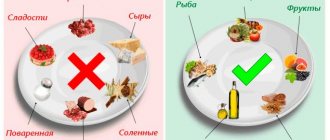University
→ Home → University → University in the media → Hypertension is “covering.” Removing allies
Judging by the results of many years of foreign and domestic research, over 40% of the adult population suffers from arterial hypertension, and more than 50% of people at retirement age suffer from arterial hypertension.
Judging by the results of many years of foreign and domestic studies, over 40% of the adult population suffers from arterial hypertension (AH), and more than 50% of people at retirement age. Surveys and measurements of blood pressure (BP) among residents of large cities show that every fourth person does not know that he has such a disease. This leads to a doctor being consulted when serious complications develop.
In the early stages, arterial hypertension can be asymptomatic. Patients do not complain, sometimes they note dizziness, pain in the back of the head, nosebleeds, shortness of breath, weakness, tinnitus, but they do not attach any importance to this.
According to WHO experts, systolic blood pressure (upper) is below 140 mmHg. Art. and diastolic blood pressure (lower) less than 90 mm Hg. Art. - the norm regardless of age and gender. However, there is the concept of “target level” - optimal blood pressure values for patients with concomitant pathologies.
Arterial hypertension is divided into primary and secondary. In the majority of patients (up to 95%), it is primary - this is the main ailment. Increased blood pressure with secondary arterial hypertension is a symptom of unhealthy kidneys, renal arteries, endocrine system, etc.
Arterial hypertension. Risk factors:
Uncontrollable - it is impossible to change their influence. These are hereditary predisposition, age and gender.
Controlled - features of lifestyle and behavior. Smoking, excess body weight, alcohol, poor physical activity, salty food are allies of hypertension.
Psycho-emotional stress and prolonged stressful situations increase blood pressure. People whose work involves great responsibility (managers, dispatchers, doctors, nurses, teachers, salespeople, etc.) are at risk.
But positive emotions have a beneficial effect. We all need to be more tolerant and kinder to others, think more about pleasant things rather than bad things, and smile.
Treatment of arterial hypertension
— The disease requires lifelong systematic treatment. The main thing is to achieve the target blood pressure level, protect target organs and prevent cardiovascular complications (cerebral stroke, myocardial infarction, heart failure, sudden death). It has been proven that a decrease in systolic blood pressure by 10–12 mmHg. Art. reduces the risk of myocardial infarction by 16%, cerebral stroke - by 38%, sudden cardiac death - by 21%.
The set of measures consists of medicinal and non-medicinal methods.
The former, in more than 50% of cases, make it possible to prevent progression and damage to internal organs in the early stages of the disease. If pathology already exists, enhance the effect of drug therapy by gradually reducing the dose and number of tablets. Non-drug therapy for arterial hypertension is the use of medicinal plants and a special lifestyle.
If non-drug remedies are not enough, they are supplemented with medications. More than 60 types of medications that effectively lower blood pressure are used in the country. Their mechanism of action is different. Only a doctor, having assessed the risk factors, features of the course of the disease, and the presence of concomitant diseases, can make the right choice.
Sometimes patients refuse to take medications, citing the fact that they tolerate their high blood pressure well and are already accustomed to it. Clinical experience in monitoring such patients shows that they often develop complications - hypertensive crisis, myocardial infarction, stroke. The risk of sudden, premature death is much higher than for those who regularly use antihypertensive drugs.
For treatment to be successful, medications must be taken daily, constantly, and strictly follow the doctor’s instructions. You cannot change the dose without his consent or interrupt therapy. This negates the enormous efforts spent on normalizing blood pressure.
Hypertensive crisis (HC)
According to experts from the European Society of Hypertension, a hypertensive crisis is a state of marked increase in blood pressure, manifested by aggravation of clinical symptoms and requiring a rapid, controlled decrease in blood pressure to prevent or limit damage to target organs.
A hypertensive crisis is provoked by: refusal of treatment, willful withdrawal of medications or dose reduction, emotional stressful situations, overwork, withdrawal syndrome. In weather-sensitive patients, it is often caused by sudden changes in weather.
A jump in blood pressure can occur with any degree of hypertension. As a rule, in the early stages of the disease, the crisis proceeds violently, with a throbbing headache, dizziness, nausea, vomiting, agitation, trembling in the body, and a feeling of lack of air. The patient notes fever, a rush of blood to the head, sweating or coldness of the hands and feet, sometimes “fading” of the heart, pain in it. Such a crisis is manifested mainly by an increase in systolic blood pressure and lasts several hours.
At later stages, more often in elderly patients, a hypertensive crisis develops with increasing symptoms and can last up to several days. Worrying severe headache, ringing in the ears, nausea, vomiting. There is disorientation in time, delirium, depression, lethargy, drowsiness, “grid” or “flickering spots” before the eyes, vision and hearing deteriorate.
Self-help for a sharp increase in blood pressure:
•Sit comfortably, keep your legs down.
• Take one of the medications:
captopril (25 mg). Start with 1/4 tablet (6.25 mg) sublingually or orally. If the pressure has not decreased, repeat after 30–60 minutes;
clonidine (clonidine) - 0.075 mg. Inside or under the tongue. Can be repeated after 30–60 minutes to achieve the desired effect;
nifedipine (10 mg) sublingually or orally. If you experience intense pain in the heart and rapid heartbeat when your blood pressure rises, do not use it;
• for chest pain, take 1 tablet of nitroglycerin under the tongue or inject it under the tongue (do not inhale!) 1 dose in an aerosol. Sometimes this results in a severe headache. Therefore, it is recommended to use nitroglycerin together with validol. If the chest pain does not go away, taking these medications must be repeated (with an interval of 3 minutes) - up to 3 times;
when the pain behind the sternum continues to torment after that, call an ambulance. Before her arrival, chew half a tablet (0.25 g) of acetylsalicylic acid (aspirin).
• For severe emotional stress or palpitations - 40 drops of Valocordin or Corvalol.
A sharp decrease in blood pressure with rapid achievement of normal values is dangerous (fraught with ischemia of vital organs). Blood pressure should be reduced by 15–25% in the first 2 hours after taking the drugs, and then it gradually drops over another 2–6 hours. Remember that the effect of the drug begins in 10-30 minutes, so do not swallow everything in a fright. During a crisis, monitor your blood pressure every 15 to 30 minutes.
If an increase in blood pressure is accompanied by severe pain in the heart, suffocation, shortness of breath, neurological symptoms (double vision, impaired speech, vision), deterioration in general condition, call an ambulance immediately. While she is driving, use the self-help measures described above.
Elena Belskaya , Associate Professor of the 2nd Department of Internal Diseases of the Belarusian State Medical University, Candidate of Medical Sciences. Sciences Medical Bulletin , January 6, 2011
Share
How to recognize a hypertensive crisis
Knowing the signs of a hypertensive crisis, you can assess the changes occurring in the body and provide the victim with the necessary assistance in a timely manner.
Main symptoms:
- nausea;
- headache;
- blurred vision;
- chest pain;
- weakness.
The causes of hypertensive crisis are:
- severe injuries, burns, concussion;
- state of stress;
- disruption of the kidneys, heart, endocrine system;
- preeclampsia in pregnancy;
- taking drugs or alcohol;
- advanced hypertension or improper treatment of this disease.
It is important to monitor the dynamics of blood pressure levels in cases of traumatic brain injury, preeclampsia and eclampsia in pregnant women, as well as in a state of drug intoxication.
Hypertension
You are experiencing increased blood pressure. Arterial hypertension is a syndrome of increased blood pressure (BP) in hypertension and symptomatic arterial hypertension .
Depending on the etiology, arterial hypertension is divided into two groups:
1. Primary (hypertension).
2. Secondary (symptomatic arterial hypertension).
Hypertonic disease
– a chronic disease of the cardiovascular system, the leading manifestation of which is the syndrome of high blood pressure in the absence of a connection with diseases that cause symptomatic arterial hypertension.
Secondary (symptomatic) arterial hypertension
– increased blood pressure levels due to the manifestation of a specific disease (kidney disease, thyroid disease, pheochromocytoma, etc.).
Important to remember
that high blood pressure does not return to normal on its own and without treatment, high blood pressure leads to serious complications such as stroke and myocardial infarction. Currently, blood pressure levels can be successfully controlled using non-drug and medicinal means. If you are diagnosed with high blood pressure, it is important to immediately understand that a large proportion of successful treatment depends not only on the doctor and medications, but also on your own attitude towards the disease and strict adherence to recommendations. Increased blood pressure is caused by a number of factors closely related to lifestyle and habits: unhealthy diet, smoking, lack of physical activity, psycho-emotional stress, etc. As a result of medical monitoring, specific risk factors for increased blood pressure are clarified, as well as the risk of complications and the need to fully follow the prescribed recommendations .
The main areas of prevention that help normalize blood pressure levels:
1. Regular self-monitoring of blood pressure levels by patients.
2. Non-drug methods of prevention.
3. Antihypertensive therapy, which is prescribed and adjusted only by a doctor.
- Self-monitoring of blood pressure levels by patients
To assess the effectiveness of preventive and therapeutic measures, self-measurement of blood pressure levels by the patient at home is of great importance. The reliability of blood pressure self-monitoring results depends on patient training in the correct measurement technique and the use of devices that meet international accuracy standards.
Regular self-monitoring of blood pressure levels promotes the patient's active participation in controlled treatment of hypertension, increases his adherence to preventive measures and therapy, and expands awareness of his health status.
Blood pressure levels should be measured twice a day - morning and evening - in a sitting position after resting for 5 minutes. The morning measurement is carried out within an hour after waking up (before breakfast), the evening measurement - before dinner or at least 2 hours after dinner.
In patients with frequently recurring hypertensive crises, in addition to routine measurements, additional monitoring of blood pressure levels is necessary during periods of deterioration in health. Such episodes, as well as the results of routine measurements, should be recorded by the patient in a diary.
2. Non-drug prevention methods that help normalize blood pressure
2.1.Smoking cessation. Under the influence of nicotine, the heart rate increases, vasospasm occurs, and as a result, blood pressure increases, which significantly increases the risk of cardiovascular complications (stroke, myocardial infarction, etc.).
2.2. Reducing table salt consumption. You should limit your consumption of table salt as much as possible - to 5 grams per day or less. Salt retains fluid in the body and weakens the effectiveness of all antihypertensive drugs.
2.3.Reduction of excess body weight.
Weight loss is accompanied by a decrease in both systolic and diastolic blood pressure levels.
2.4. Increase physical activity.
Increased physical activity has a positive effect on blood pressure levels.
Even a little physical activity is better than no physical activity at all. Fast walking, aerobic exercise, and swimming, when performed regularly, can reduce high blood pressure.
For this purpose, 3-4 classes per week at an energetic pace for 30-45 minutes are enough. 2.5. Reduce or stop drinking alcohol.
You need to limit, and if possible completely stop, alcohol consumption. Alcohol causes an increase in blood pressure both during chronic use and during withdrawal syndrome, which is a risk factor for the development of complications of the disease.
2.6. Comprehensive diet modification.
A healthy diet based on increasing the consumption of vegetables and fruits, including fish and seafood, as well as limiting animal fats, helps lower blood pressure levels and reduce the risk of cardiovascular complications.
2.7. Elimination of psycho-emotional stress.
Psychoemotional stress, which is typical for most patients with arterial hypertension, plays an important role in increasing blood pressure levels. In the conditions of the intense rhythm of modern life, reduction and, if possible, complete elimination of psycho-emotional stress on the basis of adequate psychological support, becomes an essential element in the prevention of hypertension and hypertensive crises.
Antihypertensive therapy
If the effect of non-drug methods of normalizing blood pressure is insufficient, drug antihypertensive therapy is indicated. With the help of your doctor, you need to select medications to maintain normal blood pressure levels and constantly take them in recommended doses. Remember that hypertension cannot be cured, so you cannot take breaks from taking medications or take them in “courses”!
The most important requirement for normalizing high blood pressure is regularly visiting your doctor. Most cases of hypertensive crises and cardiovascular complications develop against the background of unauthorized withdrawal of antihypertensive drugs. Medicines recommended by your doctor to normalize blood pressure should always be with you!
In some cases, an acute increase in blood pressure takes on a crisis course - a hypertensive crisis.
Hypertensive crisis -
This is a sudden, sharp rise in blood pressure, accompanied by a deterioration in health and the development of complications.
Unlike arterial hypertension, during a hypertensive crisis there is a sudden (from several minutes to several hours) increase in blood pressure, to individually high values, accompanied by clinical symptoms, requiring an immediate, controlled decrease in blood pressure to prevent damage to vital organs (heart, brain, kidneys).
The main symptoms of a hypertensive crisis:
● headaches of various types, dizziness, nausea, vomiting;
● blurred vision in the form of a veil or flickering “flies” before the eyes;
● heaviness or pain in the heart area;
● feeling of shortness of breath, chills, trembling, sweating, etc.
You must call an ambulance and do the following before it arrives:
● place the patient in a bed or chair so that the head is elevated;
● unbutton the collar and remove clothing that restricts the chest;
● open the window for fresh air;
● measure blood pressure.
You need to remember that you cannot sharply lower your blood pressure on your own! Relieving a hypertensive crisis involves a gradual decrease in pressure, otherwise organ ischemia may develop.
Further actions are determined by the emergency medical personnel!
RELIEF OF HYPERTENSION CRISIS
A hypertensive crisis is a sudden increase in blood pressure, as a result of which a person’s well-being sharply worsens. It is very difficult to predict the development of the crisis. For each individual patient, a hypertensive crisis is characterized by an increased level of blood pressure, which differs from the regular one.
How dangerous is a hypertensive crisis?
A hypertensive crisis is dangerous because it causes serious complications - vital organs are affected: the liver, kidneys, heart and brain. In addition, a hypertensive crisis can lead to visual impairment. Therefore, when symptoms of a crisis appear, it is important to provide timely and quality assistance. It is to eliminate symptoms and prevent complications from occurring.
The causes of this condition in humans are:
- stress or emotional tension;
- changes in weather conditions: sudden cooling, warming, winds;
- alcohol poisoning;
- eating a lot of salt;
- discontinuation of therapy in those who have been taking antihypertensive drugs for a long time.
However, the most common cause is still nervous tension. Among the main manifestations of a hypertensive crisis is a feeling of fear and anxiety, which must be eliminated first in order for the pressure to return to normal.
Symptoms of a hypertensive crisis are:
- A sharp increase in blood pressure.
- Headache, which is localized in the back of the head, and dizziness;
- Nausea turning into vomiting - this symptom is more characteristic of a complicated hypertensive crisis;
- Vision problems - some patients complain of the appearance of dots in front of the eyes, partial blindness is possible;
- Redness of the skin in the face and neck;
- Trembling throughout the body;
- Feelings of fear and panic are common symptoms of a hypertensive crisis, as it is often caused by emotional tension or stress.
What to do for emergency care during a hypertensive crisis:
- First of all, it is necessary to calm the patient. You can take Corvalol, tincture of valerian or motherwort.
- Provide a flow of fresh air into the room where the patient is located by opening a window or vent.
- It is advisable to put the patient to bed, giving him a semi-sitting position with the help of pillows, to warm him up and ensure peace. Place an ice pack on your head
- or a cold compress, and put mustard plasters on the calves or the back of the head, or apply warm heating pads to the feet and legs (for 15-20 minutes).
- If chest pain and shortness of breath occur, take 1 tablet of nitroglycerin and call an ambulance.
- If signs of a hypertensive crisis appear, you can take ½ tablet of captopril (meaning a dosage of 25 mg) or 10 mg of nifedipine sublingually (under the tongue). If the expected effect after taking these drugs in the indicated dosage does not occur after half an hour, then you can take another same dose, but no more! If there is no effect after another 30 minutes, you must call an ambulance.

